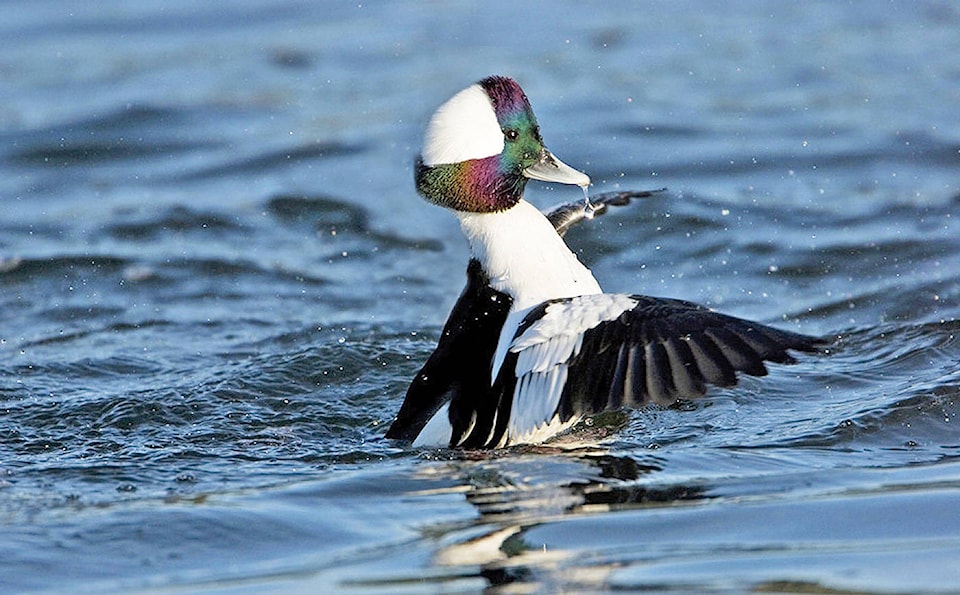Warm temperatures and weather patterns could be behind the late arrival of the Saanich Peninsula’s usually punctual sea duck.
A flock of around 485 Bufflehead ducks was counted in the Shoal Harbour Bird Sanctuary area around Sidney and North Saanich on Oct. 30.
“In spite of their late arrival, Buffleheads made up for lost time with a massive influx in the last two days,” said researcher and biologist Kerry Finley, who has been tracking the little sea ducks for years.
He said this year’s late-arriving flock of Buffleheads is the highest number ever recorded and is similar in nature to 2015 — when major weather events were making the news. Last weekend saw records fall due to warm temperatures throughout Greater Victoria.
“Hot and dry in B.C., record forest fires, record cold in the east … note how far above last year’s numbers and the average this year’s peak is.”
Finley pointed to statistics he’s compiled on the Bufflehead’s migratory return to the Peninsula since 2000. The average between 200 and 2016 shows large numbers of Buffleheads arriving anywhere from 15 to 33 days after September 30. This year’s peak arrival was 30 days after that mark.
The first Buflehead to arrive at Shoal Harbour was late — showing up on Oct. 21, approximately 303 days after the average arrival time. The first reported Bufflehead in the area, Finley said, was spotted in Oak Bay on Oct. 20.
Typically, Buffleheads arrive at Shoal Harbour every 297 days — making it one of the most punctual migratory birds in the world. With an estimated variation of three days, give or take, the All Buffleheads Day celebrations to mark the occasion was set for Oct. 13 to 15.
The next longest period of the Buffleheads making a no-show at the usual time was Oct. 22, 2007.
Finley said All Buffleheads Day itself is a scientific constant, based on more than 600 days of continuous observation, studying the timing of “biological phenomena (such as migration) in relation to external forces of the environment …” The migratory precision (typically), Finley explained, is a biological indicator of important movements in weather and climate patterns in the northern hemisphere. Specifically, this study watched the effect of frost advancement over the Buffleheads’ summer range, pushing their migration west.
This year, however, weather appears to have conspired against the norm.
“This is one of the longest vigils that I’ve experienced,” Finley wrote in a recent email, “and I’m relieved that’s its over, so I can settle down to other pressing matters like tarping the leak in my roof again, before the deluge to begin soon.”



